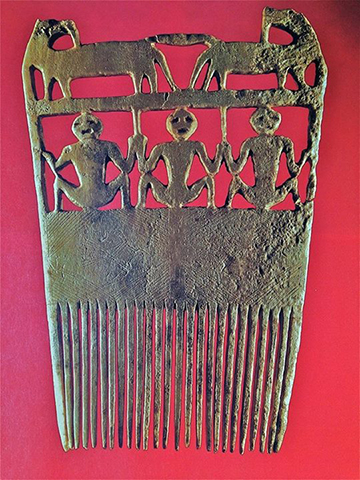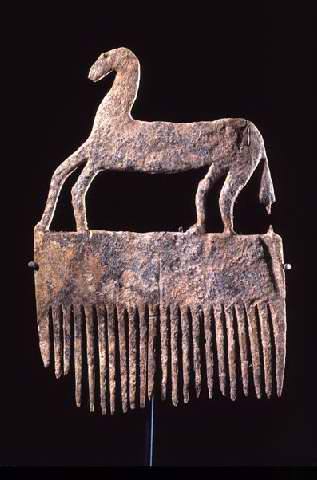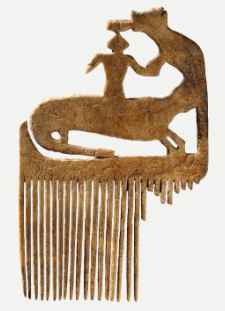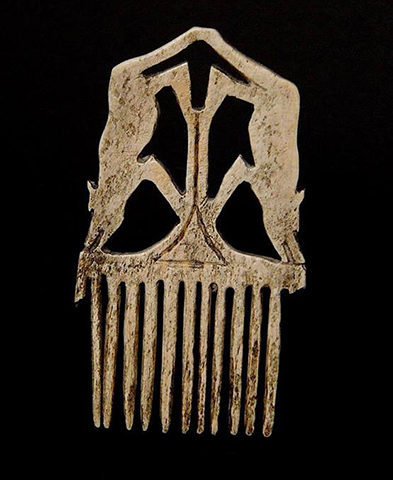During the Industrial Age, artists rebelled against machine-produced products by hand-crafting exquisite works of art. Today, computer aided design (CAD) is a primary force in industrial production.
However, instead of rebelling, Kristopher Leinen uses Texas Tech’s School of Art CAD-based software to serve his artistic inspirations. He combines technology and hand crafting to create award-winning jewelry.
His “Garden of Eden” hair comb won the 2012 Niche Award in the Student Sculpture to Wear category. The Tree of Knowledge is made from sterling and argentium silver, 14k white and yellow gold, garnets, rubies, and diamonds.

“The comb is worn on the crown of the head as if reaching towards the heavens… This piece was created to empower the wearer… Simultaneously, it is meant to remind the viewer of the lure of temptation,” said Leinen.

Another comb in Leinen’s collection is “Up-Rooted.” It was also made in 2012, using Argentium silver, 18k gold, cocobolo (a tropical hardwood), acrylic, tsavorite garnets, white diamonds, and blue diamonds.
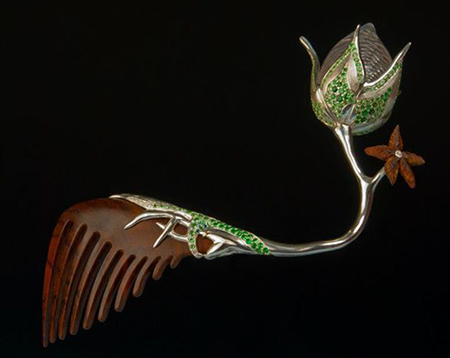
Leinen believes one has to balance concept and craftsmanship in order to give a piece of jewelry its unique voice. “I don’t know if anybody ever achieves it intentionally and purposefully and locks in on it, but through growth and time, I am starting to develop my own language and a way that my pieces can speak for themselves,” he said.
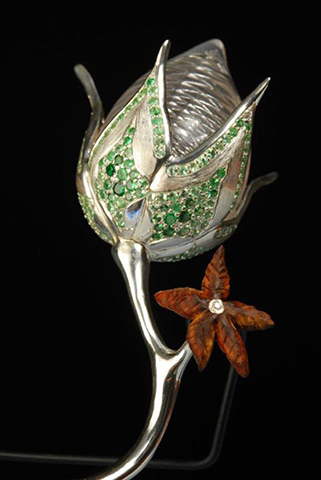
I think his language and the balance in his jewelry is extraordinary. As brooches can also be worn as hair ornaments, I will end this presentation of Leinen’s work with a piece made in 2010, “Fruit-Flower Brooch.” Materials: Brazilian kingwood, pink ivory wood, sterling silver, 14k gold, copper, and brass.

कंघी
For more scholarly research, please examine our Resource Library and these books:
 Inspired Jewelry |
 The Sourcebook of Contemporary Jewelry Design |
 Contemporary Jewelry in Perspective |


